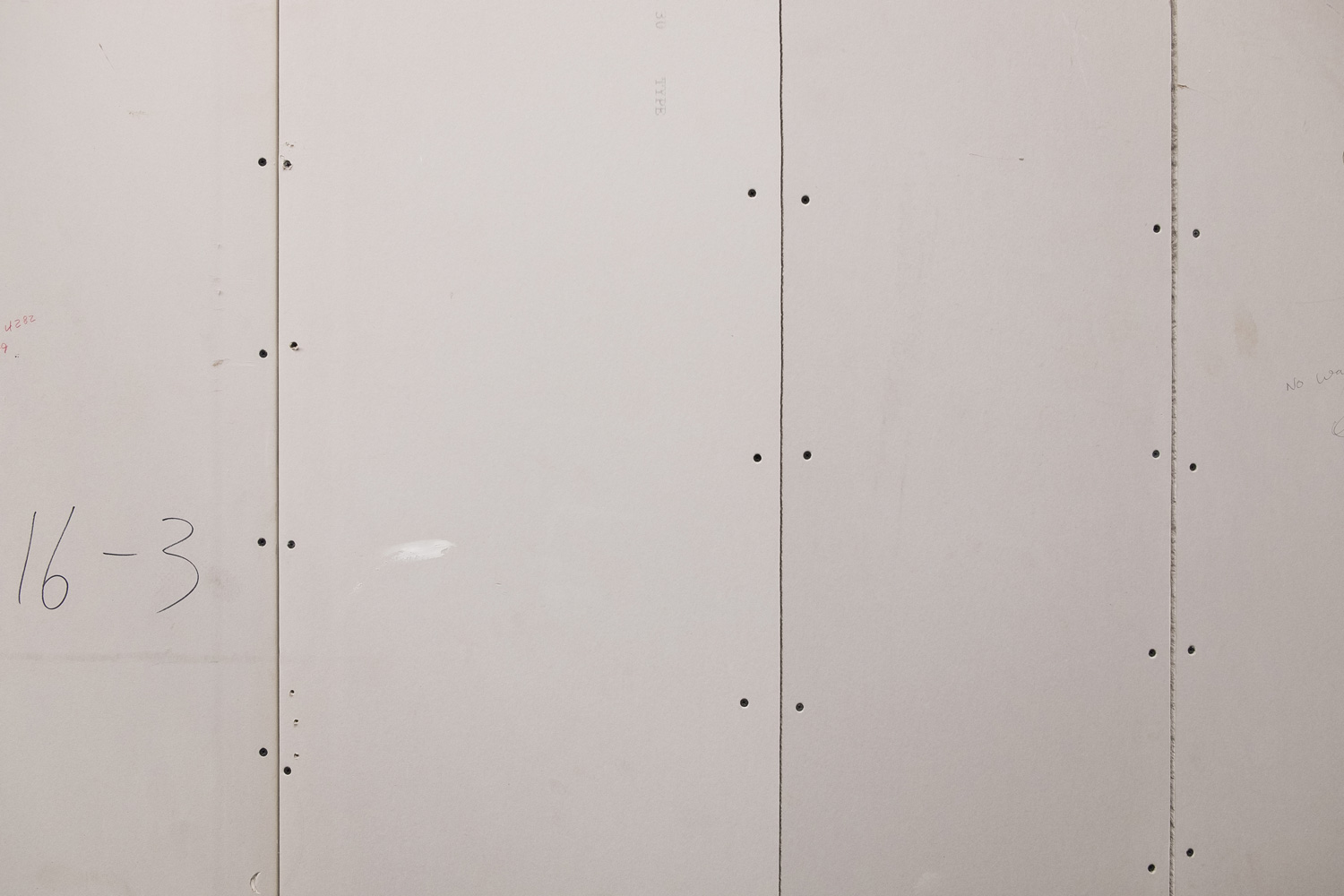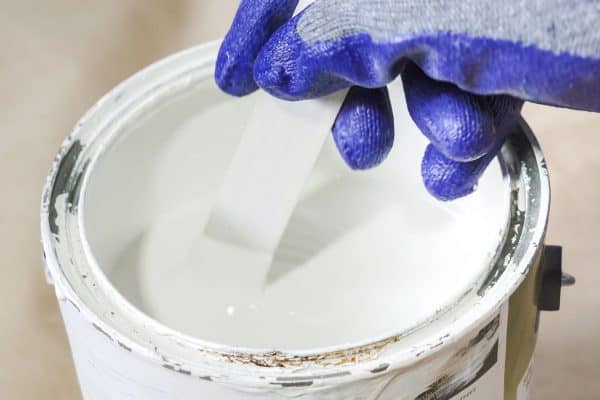Drywall is often the most commonly used material for interior walls and ceilings. On some occasions, you may find that your drywall has screws showing up through the paint and wonder what to do about it. Is there a way to prevent this from happening again? We've searched for a solution to this problem for you!
Screws popping out of your drywall are often caused by issues behind your drywall. The lumber behind your drywall may be experiencing expansion and shrinkage, causing the screws to pop out. Reattaching your drywall to the frame is one method to fix this problem.
Aside from lumber shrinkage underneath your drywall, there may be other issues that are causing your screws to show through the paint. Please continue reading to learn more of these issues that are causing your screws to pop out of your drywall.

Why Are Drywall Screws Showing Through Paint?

We may include affiliate links and curated AI content to highlight top design styles.
When drywall screws pop up and show through the paint, they look quite unsightly and bothersome. Most of the time, you will wonder what causes this because it looked pretty good when it was just newly installed.
Expanding Or Contracting Lumber
One of the reasons your drywall screws are showing through the paint is because of lumber issues behind your drywall. The lumber in the studs you have used for the frame may have contracted or expanded, depending on your studs' environment.
Humidity causes the studs to absorb moisture and causes the lumber to expand. In a dry environment, moisture is released from the studs, causing the lumber to contract. When this happens, it can cause your screws to loosen and pop out from their installation.
Screws Driven Too Deeply
Another reason that might cause your screws to show through the paint is that it might have been installed too deeply. Drywall panels often have a thin paper-like material meant to protect the drywall. Driving a screw in too deeply can puncture and penetrate this layer. This makes the screw weaker, causing it to pop out from the surface.
Other Causes
Other causes that might make your screw weaken and pop out of your drywall are:
- improper fastening to the studs making your drywall loose,
- using fasteners of the wrong length,
- or warped and misaligned frames.
How to Fix Popped Screws

One of the most effective ways to fix popped screws on your wall is to re-attach the drywall to your frames. Re-attaching your drywall in order for it to secure itself properly to the frame can help you fix the popped screws on the surface. Here are the instructions on how you can re-attach them.
Materials Needed:
- Drywall screws
- Drill
- Screwdriver
- Spackling compound
- Drywall knife
- Fine grit sandpaper
Instructions:
1. Pick appropriate length drywall screws
Before re-attaching your drywall, make sure to choose the appropriate length for the drywall screws you will be using. For standard 1/2-inch drywall, you can use 1 1/4-inch drywall screws to secure them to the frame. You can also use drywall nails as an alternative.
2. Drive new drywall screws
Drive the new screw about 1 or 2 inches above the popped screw on your drywall. Next, drive a second screw underneath your popped screw, and make sure that these screws go securely to the studs on the back. Make sure that the new screws are slightly recessed and that it doesn't break the paper-like material in order to keep your screws secure.
3. Reset the popped screws
Once the new screws are driven in, you can now reset the popped screw or remove it completely. Most contractors suggest removing the screw completely as it might not be as secure as the new ones.
4. Fill in the holes
Check to make sure if the popped screw fastener caused your drywall to break or crumble. If it did, make sure to remove all the small loose pieces before filling in the holes.
If you choose to remove the popped screw completely, use a spackling compound to fill in the hole. Use your drywall knife to smoothen out the compound over the surface.
5. Cover the new screws
If you choose to simply re-set your screws, cover up the old and new screw heads with spackling compound. Skim the area surrounding the screws and allow the compound to completely dry. Ensure that the screws don't look raised, so you may need to re-apply at another layer to cover them completely.
6. Sand the compound and re-paint
Using fine-grit sandpaper, sand the newly compounded surface to smoothen out the surface. The fine-grit sandpaper will prevent your compound from breaking off in large chunks. After smoothing out the surface, you can now re-paint the area. Make sure to blend it with the old paint to make it look seamless.
Preventing Screws from Popping
Popped drywall screws are pretty common, but this doesn't mean that you can't prevent it from happening to your drywall. Here are some tips to prevent screws from popping up.
Do not install too deeply
Avoid installing your screws too deeply into the wall because it loses integrity if it breaks through your drywall's paper-like layer. Keep your screw head visible on the surface, but make sure that the screw shank is driven deep enough into the frame.
Use correct drywall screw length
The right drywall screws will make sure that your drywall is secured well enough if you use the right ones. A good suggestion is to choose a screw that will be able to pierce your stud about 3/4 of an inch deep as the minimum.
Don't use too many screws
Using too many screws can tighten your drywall, giving it more reason to pop unnecessarily. For drywall, it is suggested that every 16 inches should have one fastener on each corner and two on the field.
When installing drywall, begin on one end, install screws on the center, and finish off the far end. This ensures it is flat and secure against the studs on your wall.
Moisture control
We all know that one of the major reasons screws pop out of the drywall is because of moisture. In order to combat this issue, you can use a dehumidifier in your room to control the moisture vapor inside the house. This won't completely eliminate the issue, but it should help in controlling the expansion and contraction of your studs.
Check out this dehumidifier from Amazon.
Are Popping Drywall Screws Dangerous?

Generally speaking, drywall screws popping out or showing through the paint is not inherently dangerous. It does, however, give homeowners a reason to check if the studs of their homes are still in excellent condition.
One of the qualities of drywall is that it is porous. Therefore, it will also absorb moisture from the surrounding air. This is also true for the studs behind it, as lumber also absorbs moisture, affecting the wood. Moisture can cause the wood to expand, which is one reason why drywall nails and screws are suddenly loose.
Too much moisture in your home can cause issues down the line, and there is a "safe" moisture level that you should check to ensure that the materials used in your home still have integrity. The excessive moisture in your home can also cause mold to grow, so it is best to check the right levels all the time.
One of the best ways to check for the moisture levels in your home is to use a digital moisture meter. These are easy to use and can detect the safe amount of moisture that is appropriate for your home. Knowing the relative humidity in your rooms can prevent your drywall nails or screws from popping out.
Get this digital moisture meter on Amazon.
Final Thoughts

Screws popping through the surface of your drywall is a common issue for many homes. The cause is pretty inevitable, but it can be prevented by installing the drywall screws properly.
There are ways to remedy this and fix the problem altogether for those who have experienced the screws showing up through the paint. Fixing the popped screws is not a difficult task, but it's more complicated than just re-screwing the popped screw through the drywall. It just needs little elbow grease to hide those screws underneath the paint.
Is there something you'd like to learn more about using drywall in your home? Here are some of our articles that would be of interest to you:





